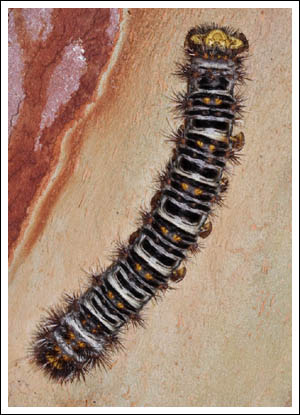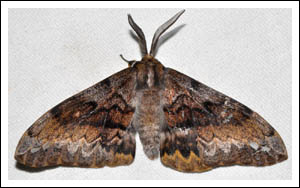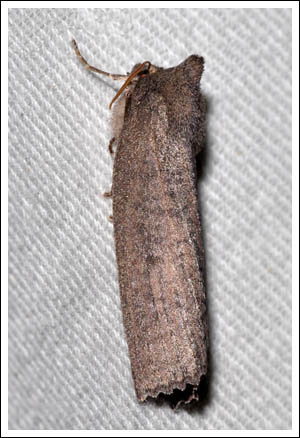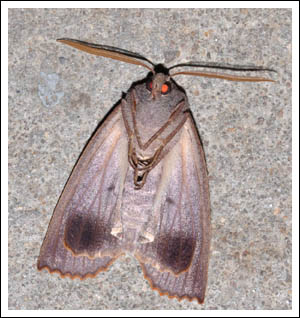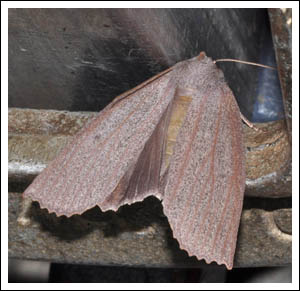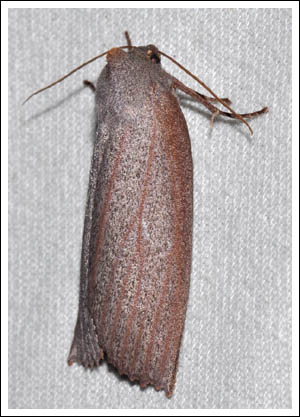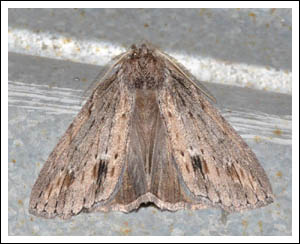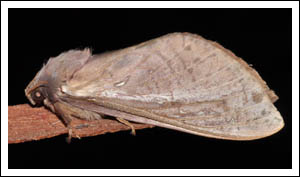Following the record of Chrysolarentia actinipha a week ago, another session was called for to see if any more were about. That proved to be not the case, but there was another surprise. At the beginning of January a Chelepteryx collesi larva was discovered behind a loose sheet of Angophora costata bark, and duly photographed.
The loose bark was secured to protect the larva, and in due course it disappeared, hopefully to pupate somewhere in the canopy. May is the main flight month for this species and males can come to the light in quite large numbers. A check of the light after two hours on this night hit the jackpot with a male moth, in all likelihood the adult of the January larva. How this species appeared in a garden many kilometres from its natural range remains intriguing.
The Batwing Moth.
Moths in the Paralaea genus fly in autumn, and two species came in to the light, this is Paralaea beggaria, a female with short antenna fringes visible. (Emmominae, Nacophorini)
The Peppermint Looper Moth.
Males and females of Paralaea porphyrinaria were numerous.
The Chestnut-veined Crest Moth.
Males.
Females.
Moths in the Chlenias banksiaria group also fly in autumn, this is a particularly nice male. (Ennominae, Nacophorini)
Noctuids generally have simple antennae, an exception is Agrotis porphyricollis. Markings can be quite variable, this is an attractively marked individual. (Noctuinae)
Finally in this collection of autumn flying moths, a Hepialid, Oxycanus dirempta. It refused to leave the floor so was encouraged to cling to a piece of bark.
The Variable Oxycanus.
More pictures here, Click to enlarge.
References and further reading,
Moths of Victoria, Volumes 5 and 6.

